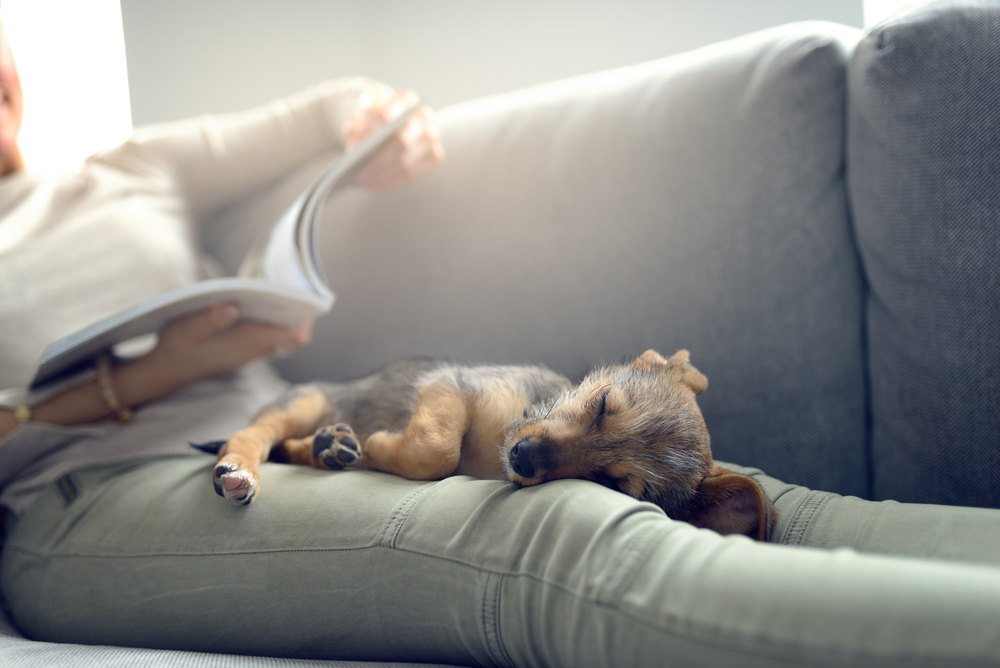Long-distance travel is stressful at best, and a slobbering dog with nausea, or a vocal carry-on puppy can leave you crying, “There’s no place like home.” If you have upcoming travel plans, you are probably already asking yourself, “What about the dog?” You have options, such as hiring a pet sitter, boarding your dog, or—for the brave—bringing Fido along. When planning to travel with your dog, consider their temperament, health, and travel experience, and use our Star of Texas Veterinary Hospital team’s six tips for trauma-free travel.
#1: Schedule a pre-travel veterinary visit
Schedule a veterinary appointment for your dog before your trip. Ensure they are up to date on their vaccinations—be aware that airlines require pet health certifications for travel at least 10 days prior to your flight. Discuss your dog’s health history and temperament with your veterinarian to determine if they are suited for travel, because not all dogs can handle travel, and you may need to find an alternative, such as boarding.
#2: Practice with your dog before you travel
Unfamiliar travel environments can be stressful for your dog. Before the trip, acclimate your dog to the sights and sounds they will encounter while traveling by car or plane.
- Car rides — Your dog may love going for rides around town, but a quick trip to the grocery store is a completely different experience from a cross-country road trip. Run through a practice trip with your dog by packing up the car with (empty) suitcases, and securing them in a seatbelt harness or crate. Always restrain your pet inside the car, and on a leash when getting out, to avoid injury or escape. Your drive should be long enough to observe your pet’s reaction. Look for the following anxiety signs:
- Panting
- Excessive salivating
- Lip-licking
- Barking
- Yawning
- Vomiting
- Defecating or urinating
If your dog shows car anxiety signs, contact your veterinarian to discuss training resources and anti-anxiety medication, if necessary.
- Crate and harness — To keep your dog secure during travel, you will need to ensure they are comfortable in a seatbelt harness or crate. If you are flying to your destination, research the airline’s pet policies in advance, and confirm you have an airline-approved carrier.
#3: Train your dog to travel like a pro
A well-trained dog makes travel much easier and safer for everyone. Prepare your dog for your trip by using treats and praise to positively reinforce important behavior travel commands. For example, you can tell your dog, “Wait,” before exiting the car, to ensure they don’t jump out prematurely and get loose. Help your dog create positive associations with their crate or safety harness with their favorite treats and toys. Begin training your dog on your own, or with the help of a professional positive reinforcement trainer, long before your trip. You will be glad you did, once you hit the road—or runway.
#4: Pack your pet’s essentials
Include your dog’s travel necessities in your packing list:
- Food and water
- Medications
- Treats
- Crate
- Bed
- Safety harness
- Pet first aid kit
- Poop bags
- Leash and collar, with updated identification
- Favorite toys
#5: Be prepared for a pet emergency
Following our tips will help ensure your dog’s safety during your trip, but you should also plan ahead in case your dog gets lost, or has a medical emergency.
- Microchip — A microchip and proper identification can help you reunite with your pet safely and quickly, no matter how far you are from home. Ensure your pet is microchipped before your trip—talk to our veterinarian about the quick procedure—and that your current contact information is registered with the data company.
- Collar — Your pet’s collar with current identification tags should be worn at all times while traveling.
- Emergency veterinarians — Gather contact information and directions for emergency veterinary hospitals along your route, and in your destination city.
#6: Relax and enjoy the ride with your dog

You won’t be able to plan for every possible travel challenge, or predict how your pet will react in a foreign environment. Be patient with your pet—and yourself—throughout your trip’s ups and downs. Take time to enjoy the experience, and make memories along the way.
If you have an upcoming trip with your dog, schedule an appointment with Star of Texas Veterinary Hospital, to ensure they are up to date on vaccinations, microchipped, and healthy enough for travel.






